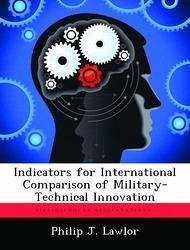This project identifies the factors needed to assess a nation's progress in military-technical innovation. Four broad categories of indicators are defined, and then further divided into specific indicators that can be empirically determined for any country's military and for a defined field of military technology. These four dimensions categorize advancements in terms of 1) Technology and hardware itself, including research, manufacturing and procurement capacities, degree of integration with other systems for enhanced or synergistic combat capability, as well as demonstrated performance in tests, exercises, or combat; 2) Operational employment of the new weapon system, to include doctrine and tactics; 3) Organizational innovation to accommodate and optimize the new technology's utility, especially in and by the armed forces, including units created to employ the new system, training established, career progression developed for specialists in the new field of combat arms, plus organizational aspects of the civilian government components of the national security complex, such as governmental policies and strategies incorporating the new type of warfare; 4) Other contextual elements representing the influences on innovation by the country's socio-cultural environment, of which the armed forces are an extension. This last set includes economic factors as well as the influential industry-, media-, and academic "elite" segments of society.This research derives representative indicators for each dimension of maturity from primarily descriptive case study analyses of alleged revolutions in military affairs in the United States and other nations. The validity of these indicators are evaluated for how well they represent the concepts of innovation, based on prominent theories of military innovation and on their unbiased applicability to various nations.
Hinweis: Dieser Artikel kann nur an eine deutsche Lieferadresse ausgeliefert werden.
Hinweis: Dieser Artikel kann nur an eine deutsche Lieferadresse ausgeliefert werden.








